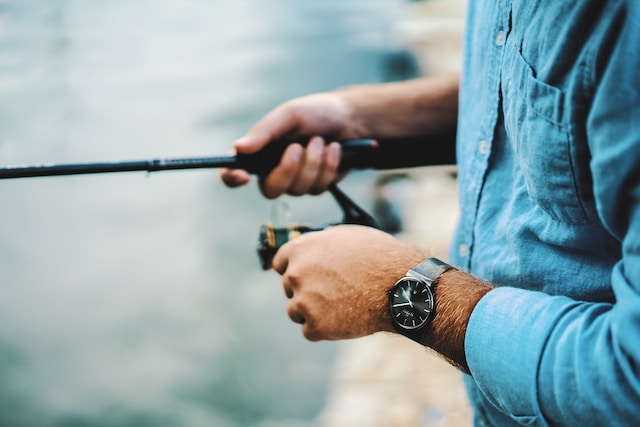7 Simple Techniques for Successfully Getting Live Bait

7 Simple Techniques for Successfully Getting Live Bait
Live bait is undoubtedly one of the most effective ways to catch a wide variety of fish, from bream to mackerel weighing more than 20 kg. To get the most out of your live baiting adventure, dive into the different techniques and hook styles that have worked wonders for many anglers.
Now, when it comes to your fishing tackle, the most important thing is to match it to the target fish. Your rod size, braid, and reel size should match your desired fish. Plus, a great tip – when using live bait, different types of reels can really change the game and improve your chances of hooking.
Mastering live baiting on a simple hook and using this premium tactic to attract the attention of your prey are skills you need to master. No matter what species you catch, keep these seven tips in mind for live bait success.
Most Sought-After Fish Species You Can Snag Using Live Bait
When learning how to catch live bait, you need to understand the most sought-after fishes. Here are some of them:
- Kingfish: Those stealthy ambush predators eagerly pursue fast-moving prey. Trigger their hunting instincts with nimble options like jack mackerel, kahawai, piper, or squid as live bait. When you’re aiming to catch a kingfish, secure it with a gaff, as nets are better suited for smaller fish.
- John Dory: These voracious predators are always on the lookout for a tasty treat. Offer them small baitfish such as jack mackerels, kahawai, piper, or any petite baitfish you can find. Beware, though; John Dory might put up a fierce fight and can feel like reeling in a heavy boot. Opt for a slow and steady retrieval and have your net ready as soon as your catch approaches the side of the boat.
- Snapper: Being opportunistic scavengers, they are willing to sample a variety of morsels. However, consistently successful live baits for snapper tend to be yellowtail mackerel.
- Marlin: They have a particular fondness for small tuna-like skipjack, although koheru, kahawai, or slimy mackerel also prove effective when slow trolling or drifting.

7 Live Bait Fishing Tips for Success
1. Location Matters
Utilizing live bait effectively is a game-changer in fishing, but it’s vital to know when and where to use it. First, make sure you’re allowed to use live bait in your fishing area, as regulations can vary. In some states, using live bait from the same water it was caught is permitted, while others have species-specific bait restrictions.
2. Ensure Perfect Timing

Additionally, consider the ideal timings for live bait. It excels in low-light situations when fish rely more on scent than sight. However, artificial lures have their place, especially for catch-and-release scenarios or in crowded fishing spots with lots of bycatch (unwanted species).
3. Worms – A Universal Bait
Worms, in their various forms, are highly effective for live bait fishing. They are readily available, resilient with minimal care, and attract a wide range of fish species.
Many anglers have caught their first fish using a live worm under a bobber. Worms emit a strong scent and exhibit enticing movement in the water, making them an irresistible choice.
You can present them on the bottom, beneath a bobber, or allow them to drift naturally through the water. Worms are primarily used in freshwater fishing, with nightcrawlers being the top choice for bass, walleye, catfish, and larger game fish. Smaller worm pieces work well for panfish and bluegill.
4. Bottom Fishing with Live Bait
Numerous game fish species feed near or on the bottom, where they find structure and cover. Consequently, many live bait fishing techniques involve presenting bait at or near the bottom, requiring the use of sinkers. Several effective rig options are available:
- Carolina Rig or Sliding Sinker Rig: This rig features an egg sinker through which the main line runs, allowing the bait to move naturally behind the sinker. Fish can pick up the bait without feeling resistance, making it suitable for various baits.
- Dropper Rig: Anglers can use multiple droppers if allowed by regulations. This rig suspends the bait just above the bottom and is effective when presented vertically from a boat or pier, but shore anglers can also make use of it.
5. Casting Strategy
When casting, it’s crucial to place your bait just beyond your target area and then reel it into the strike zone rather than dropping it directly on top of the fish. This approach prevents startling the fish, as a scared fish is less likely to bite. Moreover, many lures need a few reel cranks to find their natural rhythm, which is essential for attracting fish.
6. Steady Retrieval is Key
If you notice a fish chasing your bait, maintain a consistent retrieval rhythm; avoid abrupt changes that could alert the fish. Keep reeling steadily, as a hungry fish will often outpace your bait.
7. Don’t Overcrowd Your Baitwell
To keep your live bait healthy and active (which is more appealing to hungry fish), avoid overcrowding your baitwell. Providing ample room for your fish to move without bumping into each other or the walls of the baitwell reduces stress during the journey, ultimately benefiting your angling success.

Tips for Choosing the Best Live Bait
Now that you have mastered the art of live baiting, the next step is to choose the best bait for your fishing trip. Here are some helpful tips to aid with your decision:
- Be Aware of Your Target Fish: Start by considering the particular kind of fish you want to capture. It’s crucial to match your choice of bait to the target species since various fish have distinct preferences when it comes to bait kinds.
- Examine the Water Quality: Take time to examine the quality of the water where you want to go fishing. Different types of bait are needed for clear water compared to murky or hazy water. Your choice should reflect the situation at hand.
- Select Local Bait: When at all feasible, use bait that is native to the region where you are fishing. The familiarity of the local baits in the region makes them more alluring and raises the likelihood of a successful strike.

Final Thoughts
Once you’ve settled into a routine using live bait, don’t hesitate to introduce some variety. While it might initially seem counterintuitive, mastering the fundamentals of live baiting opens the door to experimenting with fresh fishing techniques you may not have previously considered.
For instance, you can blend live bait with chumming to entice sizable sportfish and keep them engaged – well, whatever the aquatic equivalent of that might be. Another exciting option is live trolling, allowing your live bait to swim behind your boat on a line, enticing speedy, ravenous swimmers.
We trust that these insights will enhance your fishing experience and lead to unforgettable moments on the water!




